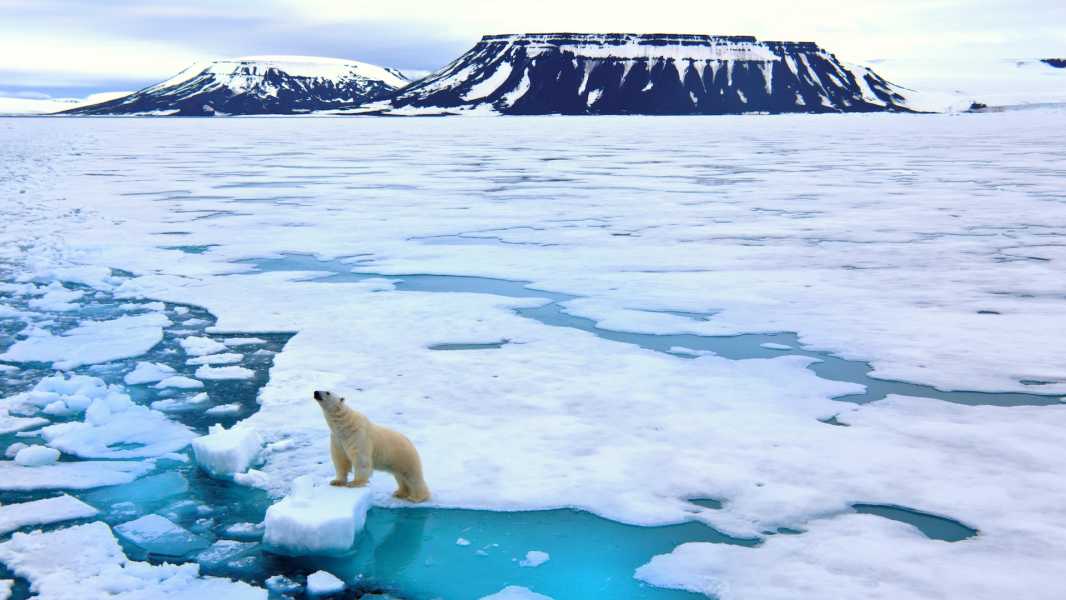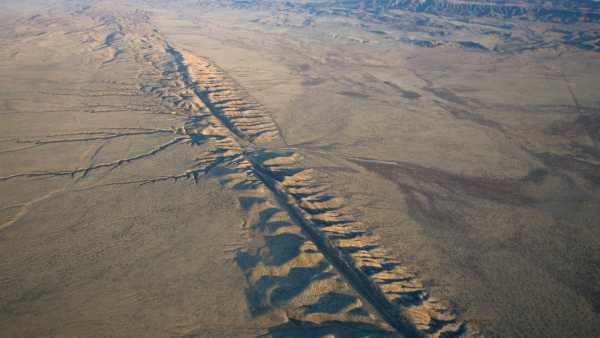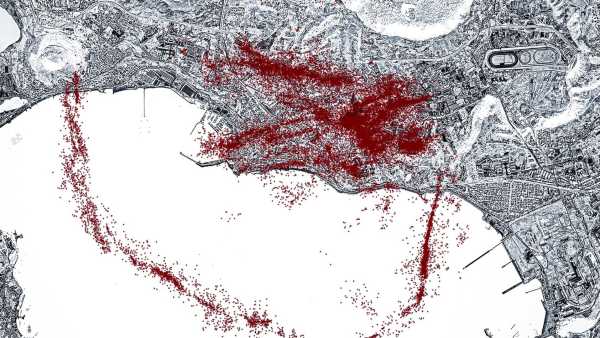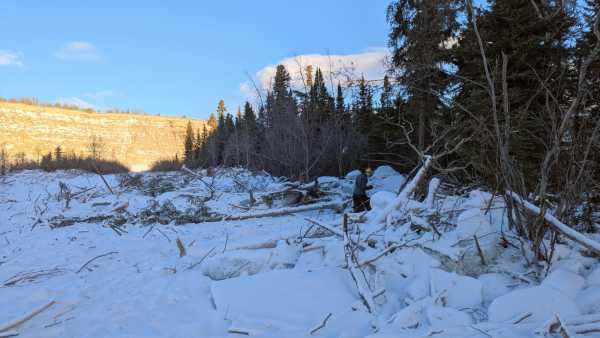
A polar bear stands on drifting sea ice in the Arctic. These bears depend on sea ice to move around their hunting territories. (Photo by SeppFriedhuber via Getty Images)
The Arctic Ocean could be ice-free for the first time as early as 2027, according to a worrying new study.
Arctic sea ice is melting at an unprecedented rate of more than 12% per decade, pointing to the day when almost all the ice will temporarily disappear.
This “planet-threatening milestone” will likely occur within nine to 20 years of 2023, no matter how humans change their greenhouse gas emissions, according to a new study published Monday (Nov. 3) in the journal Nature Communications. The most pessimistic forecasts predict it could happen as early as three years from now.
“The first day without ice in the Arctic is not going to be a dramatic change,” said co-author Alexandra Yang, a climate scientist at the University of Colorado Boulder. “But it will show that we have dramatically changed one of the key characteristics of the Arctic Ocean environment, which is the persistent sea ice and snow cover due to greenhouse gas emissions.”
Earth's sea ice has been mapped annually using satellite data that has analyzed ice changes at both poles since 1979. The world's sea ice plays a critical role in regulating ocean and atmospheric temperatures, supporting marine ecosystems, and providing energy for ocean currents that transport heat and nutrients across the planet.
The surface of sea ice also reflects some of the sun’s energy back into space in a process known as the albedo effect. This effect can also work in reverse, with melting sea ice revealing darker waters that absorb more sunlight. This means that as our planet warms, the Arctic has gone from being a refrigerator to a radiator, and is now warming four times faster than the rest of the world.
The rapid warming has already had dramatic and visible effects. The planet’s northernmost area of sea ice, which used to cover an average of 2.6 million square miles (6.85 million square kilometers) between 1979 and 1992, has shrunk dramatically this year to 1.65 million square miles (4.28 million square kilometers).
The continued decline suggests that future climate variations are highly likely to cause the ice extent to fall below the 0.3 million square miles (1 million square kilometers) at which a region is considered “ice-free.”
Using 11 climate models and running 366 simulations, the scientists behind the new study concluded that day could arrive in as little as three to six years.
This prediction was made only in the nine most pessimistic simulations, which included a string of abnormally warm seasons. However, all the simulations ultimately predicted that an ice-free day would inevitably come, most likely in the 2030s.
“Since the first ice-free day is likely to come sooner than the first ice-free month, we want to be prepared. It is also important to understand what events could cause all sea ice in the Arctic Ocean to melt,” said lead author Celine Höse, a climate scientist at the University of Gothenburg in Sweden, in a statement.
Despite the grim results, the study does contain some encouraging data: a sharp reduction in carbon dioxide emissions would significantly slow the onset of ice-free days and soften the shock of Arctic ice loss to global systems.
“Any reduction in emissions will help preserve sea ice,” Yang added.
Sourse: www.livescience.com





